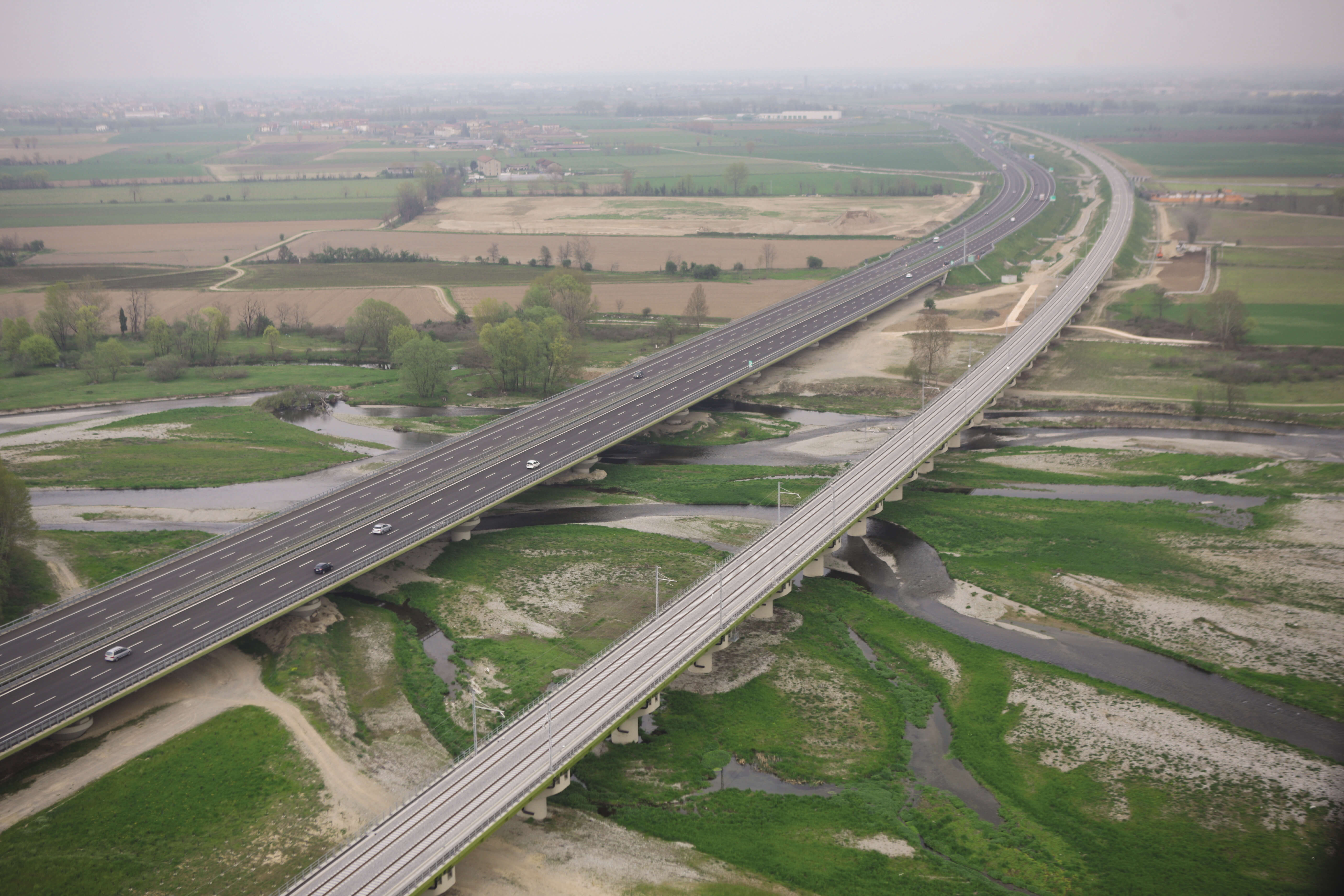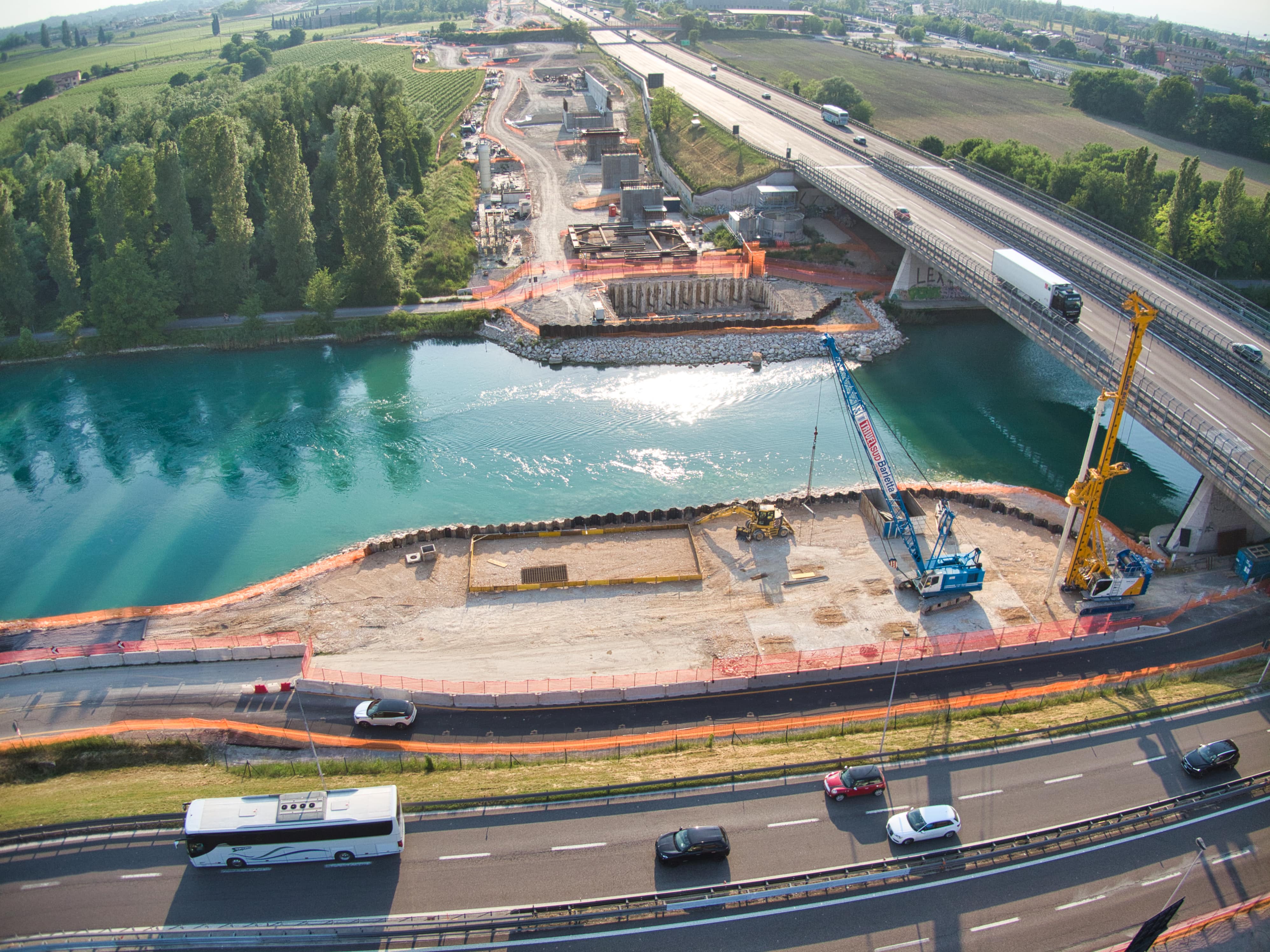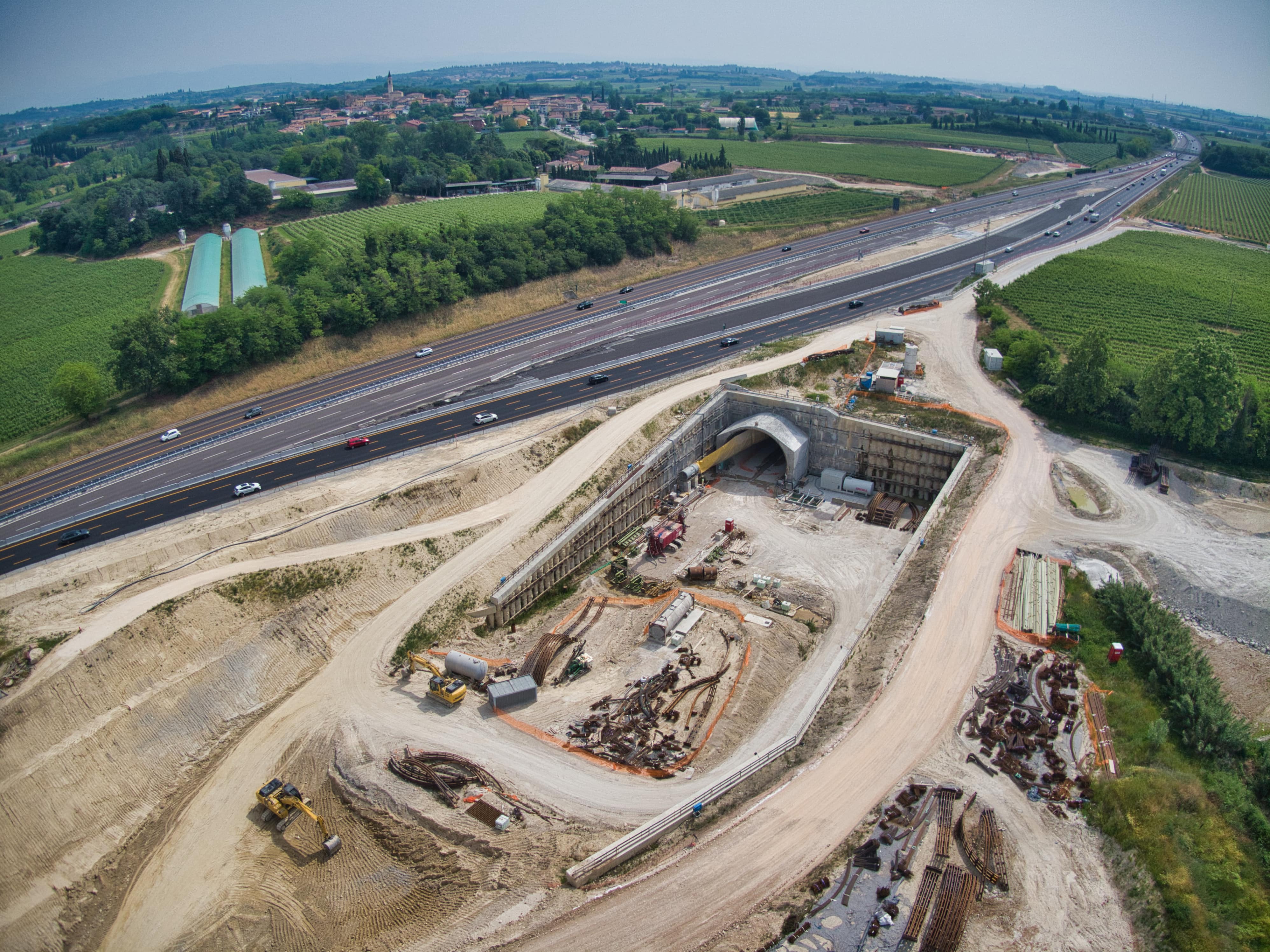The project
The Milan-Verona High Speed/High Capacity (HS/HC) railway is a Lump Sum project that consists of the design, the construction, testing and commissioning of about 100 km of Italian new rail lines, including interconnections, between Milan and Verona, part of the Turin-Milan-Venice high-speed/high-capacity railway which belongs to the Mediterranean Railway corridor, one of the strategic Trans-European Transport Networks (TEN-T) to connect the south western and eastern European countries and give additional access to the high-speed services in Italy.
Saipem is leading the CEPAV DUE consortium which is responsible for the construction in sections of the of the Treviglio-Brescia rail line— fully operational since 2016, and the Brescia-Verona rail line now in progress.
The project, commissioned by RFI, Rete Ferroviaria Italiana, a company of Ferrovie dello Stato Italiane, includes engineering and construction of rail embankments, viaducts, bridges, tunnels, flyovers, technological buildings, tracks, signalling, telecommunications (ERTMS/ ETCS level 2 for interoperability) expropriations and resolution of interferences along the railway line. The Brescia-Verona High Speed/High Capacity railway runs in the North of Italy, from Brescia station to the Verona A22 highway and it is divided into two functional lots: Brescia Est-Verona and Brescia quadrupling of the tracks.
Key facts and figures
Structures
A European project
The Brescia- Verona High Speed/High Capacity railway, included in mission 3 of the PNRR (National Recovery and Resilience Plan) for " Infrastructures for a sustainable mobility" and Investment 1.2 "Lines of connection to High Speed with Europe", runs mainly along the highway A4 Milan-Venice and the traditional railway line and it requires special attention to local stakeholders and needs, as it crosses the regions of Lombardy and Veneto and involves 11 municipalities in the provinces of Brescia, Verona and Mantua. The railway will connect the economic, industrial, production and logistic centres, cities and the main entry and exit points of the north-eastern Italy and will be part of the European railway net.
New challenges
Saipem was awarded the project by RFI (Rete Ferroviaria Italiana) for the works of the construction of the Florence high-speed/high-capacity railway link and station designed by architect Norman Foster, in addition to the expansion of the line from Piadena to Mantua and the railway node of the high speed of west Verona, which will ensure Saipem’s in the development of the country and the sustainable infrastructures.


